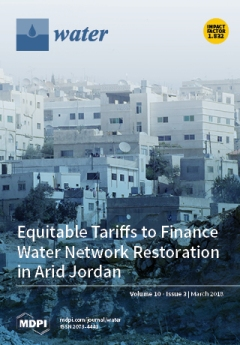Water in agricultural catchments is prone to pollution from agricultural runoff containing nutrients and pesticides, and contamination from the human population working and residing therein. This study examined the quality of water in a drainage stream which runs through a congested network of ‘line houses’ (low-income housing, typically found arranged in straight ‘lines’ on estates) in the tea estate catchment area of Pussellawa in central Sri Lanka. The study evaluated the applicability of vertical subsurface flow (VSSF) and horizontal subsurface flow (HSSF) constructed wetlands for water polishing, as the residents use the stream water for various domestic purposes with no treatment other than possibly boiling. Water flow in the stream can vary significantly over time, and so investigations were conducted at various flow conditions to identify the hydraulic loading rate (HLR) bandwidth for wetland polishing applications. Two wetland models of 8 m × 1 m × 0.6 m (length × width × depth) were constructed and arranged as VSSF and HSSF units. Stream water was diverted to these units at HLRs of 3.3, 4, 5, 10, 20, and 40 cm/day. Results showed that both VSSF and HSSF wetland units were capable of substantially reducing five-day biochemical oxygen demand (BOD
5), total suspended solids (TSS), fecal coliform (FC), total coliform (TC), ammonia nitrogen (NH
4+-N), and nitrate nitrogen (NO
3−-N) up to 20 cm/day HLR, with removal efficiencies of more than 64%, 60%, 90%, 93%, 70%, and 59% for BOD
5, TSS, FC, TC, NH
4+-N, and NO
3−-N, respectively, in the VSSF wetland unit; and more than 66%, 62%, 91%, 90%, 53%, and 77% for BOD
5, TSS, FC, TC, NH
4+-N, and NO
3−-N, respectively, in the HSSF wetland unit.
Full article





